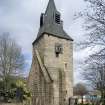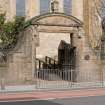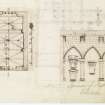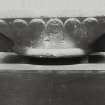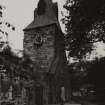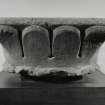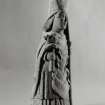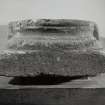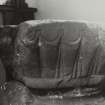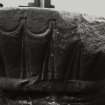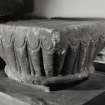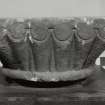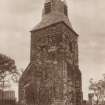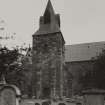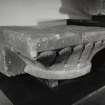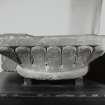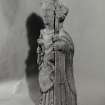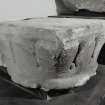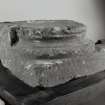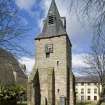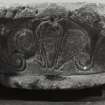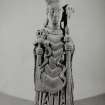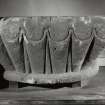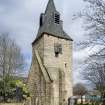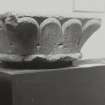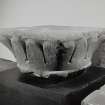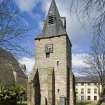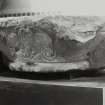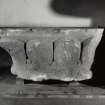Following the launch of trove.scot in February 2025 we are now planning the retiral of some of our webservices. Canmore will be switched off on 24th June 2025. Information about the closure can be found on the HES website: Retiral of HES web services | Historic Environment Scotland
Glasgow, Rutherglen, Main Street, Rutherglen Old Parish Church, Rutherglen Tower And Fragments Of Old Church
Church (12th Century), Tower (Medieval)
Site Name Glasgow, Rutherglen, Main Street, Rutherglen Old Parish Church, Rutherglen Tower And Fragments Of Old Church
Classification Church (12th Century), Tower (Medieval)
Alternative Name(s) St Mary's Church Tower
Canmore ID 268490
Site Number NS66SW 24.04
NGR NS 61331 61705
Datum OSGB36 - NGR
Permalink http://canmore.org.uk/site/268490
- Council South Lanarkshire
- Parish Rutherglen (South Lanarkshire)
- Former Region Strathclyde
- Former District City Of Glasgow
- Former County Lanarkshire
NS66SW 24.04 61331 61705 Rutherglen Tower and Fragment of Old Church
NS 6133 6170) Steeple (NR)
OS 6" map, (1968)
Rutherglen parish church was dedicated to St Mary: it belonged to Paisley Abbey. In 1791 the church was rebuilt all but the tower. This tower still stands, E of the present church along with the much older wall of the chancel against which it is built. It never had any access from the church. MacGibbon and Ross (1896-7) date the chancel wall to the Norman period (12th century), and the tower to the 14th or 15th century. The upper part of the tower was rebuilt in the 17th century.
D Ure 1793; D MacGibbon and T Ross 1896-7; H Scott et al 1915-61.
The remains of the church are as stated. The tower or steeple is in good condition. Two pier capitals and a base (? Norman) lie outside the tower. There is no trace of the foundations of the choir.
Visited by OS (J L D) 31 March 1954.
Three half capitals, an ornamented voussoir, together with the above three stones have been taken into Rutherglen Museum for safe-keeping.
Information contained in letter from A Gordon, assistant keeper, Rutherglen Museum to OS, 24 September 1980.
NS66SW 24.04 61331 61705 Rutherglen Tower and Fragment of Old Church
Glasgow, Rutherglen, St Mary's Church Tower.
Within Churchyard;
Tower and fragments of old Church (East gable and Tower)
Series of carved stones including twelfth century capitals (held in Rutherglen Museum)
J. J. Burnet's rebuild of Parish Church, 1900 -02
EXTERNAL REFERENCE
Mit. Lib. - Glas. In Former Times II -lithograph of old church steeple, 1850.
-photograph of old church steeple.
Mit. Lib. - Glasgow in the $0's. no 44 - 1 reproduction of a watercolour
NMRS REFERENCE:
Glasgow, Rutherglen, Main Street, Rutherglen Old Parish Church.
1 postcard (I.G. Lindsay Collection). -Missing at time of upgrade, 30.10.2000.
Publication Account (1978)
Rutherglen parish church, dedicated to the Virgin Mary, was assigned to Paisley Abbey sometime before 1189. Paisley Abbey maintained patronage of the church until the Reformation when it passed first to the Hamiltons of Elistoun and then to Daniel Campell of Shawfield (Ure, 1793, 80). The Norman church as it existed in Ure's day measured about sixty-two feet (19m) in length and twentyfive feet (7. 6m) in breadth, the walls being four feet (1. 2m) thick and twenty feet (6. lm) high with ten pillars - five on either side of the church - supporting it (Ure, 1793, 80). The choir which extended thirty-three feet (10.lm) to the eastern tower, virtually the only relic of the medieval church to survive, had been removed at a date prior to 1793. The tower itself was built in the fifteenth century or early sixteenth with the steeple and clock both added at later dates. The eastern gable of the medieval church with Norman masonry can be traced on one face of the tower. A small, scattered number of Norman capitals, which once formed part of a garden rockery (Shearer, 1922, 32), lie at the tower's base, dangerously exposed to the elements. A seventeenth-century lych-gate forms the first entrance to the church which stands near the present Town Hall on the North side of Main Street. The first known reference to the churchyard is in a 1262 charter of land granted by Cecilia, widow of John de Perthec, to Paisley Abbey. This land is described as lying 'inter cemiterius ecclesie Sancte Marie Virginis et aquum de Clud' (Pais. Reg., 1832, 377).
Information from ‘Historic Rutherglen: The Archaeological Implications of Development’ (1978).








































